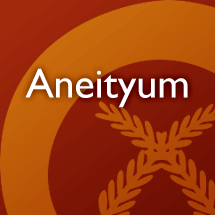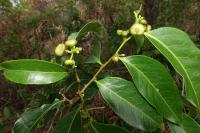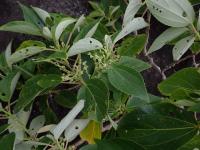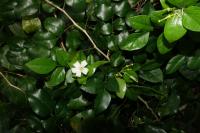Your search for * in tools has returned 25 entries
eucenwaig nieg
v. to sharpen the point of a reed like a spear
bookmarkinm̃aka
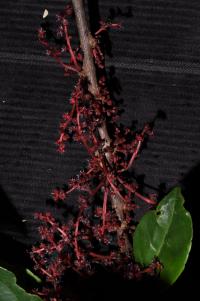
n. well branched tree, 12 m tall (collection: Gregory M. Plunkett #4022)
Example: 1. A durable hardwood that is used for house posts. 2. The wood is used to fashion cross members that affix outriggers to the body of the canoe. 3. 4-5 inch diameter saplings are used to create a track in the forest that larger logs can roll down.
bookmarknaevas
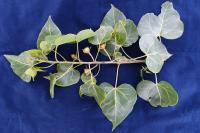
n. sparsely to moderately branched tree, 6-8 m tall (collection: Gregory M. Plunkett #3220)
Example: 1. Wood is used for carving as it is a nice black wood. 2. Also used for house posts. 3. Use sapwood – cut a piece of wood, long one 1-2 m. Put it in front of the house or take a smaller piece on top of the entrance door – protects against bad spirits.
bookmarknakwei
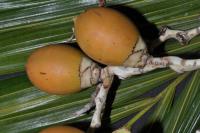
n. large palm, 20 m tall (collection: Gregory M. Plunkett #4080)
Example: 1. Children eat the nut of the ripe fruits. 2. The leaf bases can be used, when tied together, two at a time, to create a bowl from which to drink. 3. In the past, the trunks were used to fashion a hunting spear used in tribal warfare. Further context withheld.
bookmarknamlau
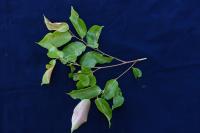
n. shrub, 2 m tall (collection: Gregory M. Plunkett #3485)
Example: 1. The larger stems of this plant can be used to build houses, for rafters. 2. It is also a good source of firewood. 3. Ancestors, before go to chief’s canal and want to talk about a complicated issue – a person would cut a branch and bring it to the sea and tap the water surface and would say what he wants, ask that he would want that issue to be solved and that others would follow his ideas and then go back to the meeting place and take stick, keep wind at his back, moving stick in all directions and then he will convince the people of his ideas. This is done by the chief’s spokesman. Helps convince the opposition. Helps keep power in hands of parent(??) chief rather than subchiefs who might have other ideas.
bookmarknamlau
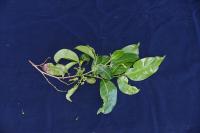
n. shrub, 2 m tall (collection: Gregory M. Plunkett #3490)
Example: 1. The larger stems of this plant can be used to build houses, for rafters. 2. It is also a good source of firewood. 3. Ancestors, before go to chief’s canal and want to talk about a complicated issue – a person would cut a branch and bring it to the sea and tap the water surface and would say what he wants, ask that he would want that issue to be solved and that others would follow his ideas and then go back to the meeting place and take stick, keep wind at his back, moving stick in all directions and then he will convince the people of his ideas. This is done by the chief’s spokesman. Helps convince the opposition. Helps keep power in hands of parent(??) chief rather than subchiefs who might have other ideas.
bookmarknamlau
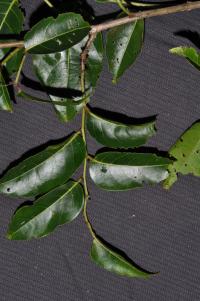
namlau
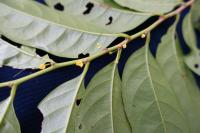
n. tree to 15 m tall, dbh 40 com (collection: Michael J. Balick #4857)
Example: The wood of this tree is good for carving. The fibers go in one direction so it is easier to carve, for example, to make a kava bowl. In general, this is the species used to make kava bowls. If your kava is not strong, then making it in this bowl will make it stronger. The kind of bowl made from this tree has a handle on each side of the bowl and it is held with 2 hands. The place name Anumwmamlau is named after this tree. There are said to be two types of this tree--one with all green leaves (this specimen) and one with white and green leaves. If a person is going to a Tabu place and is concerned about spirits, they should take a handful of these leaves and wash the body all over with it--take a swim (bath) with it. Then the person can go to the Tabu place without risk. There are other unspecified spiritual uses of this tree.
bookmarknamlau or nida
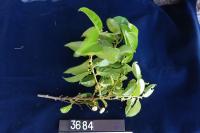
namrop̃om
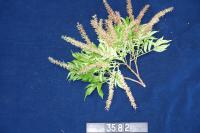
n. tree, 7-8 m tall (collection: Gregory M. Plunkett #3582)
Example: Firewood, timber good for bush houses. Calendar plant – when it is in flower, the old people know it is time to harvest root crops, like yam and other vine crops, in the wild, as yet unspecified. Local names = INYAC, NOMODEJ TAL, NOMODEJ WOU, NOU LELCEI… etc.
bookmarknawou
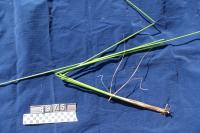
nawou
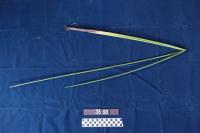
nekro
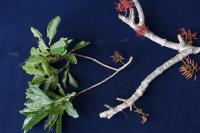
nekro
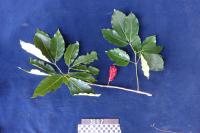
nekro
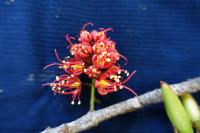
nelm̃ae
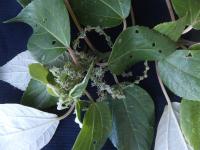
n. small tree. Found in the village, but not cultivated. (collection: Ashley A McGuigan #17)
Example: 1. Ancestors used this plant to make fish line – cut young branches, remove outer bark and tie together, put in salt water or fresh water for a week, it is now strong, dry in sun, take fibers and twist them together to make a very long fishing line. 2. Leaves are used to feed pigs. 3. Take inner bark, scrape it and put on boils. Attach with any leaf and it takes out the boil. 4. Trunk for temporary bush house.
bookmarknelm̃ai
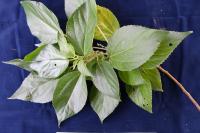
n. tree to 8 m, dbh 10 cm (collection: Michael J. Balick #4863)
Example: Fiber: Collect the stems of this plant, peel off the outer bark, soak (ret) in seawater for 1 week, then put stone on top of it-the fibers are loosened by the retting, peel them off and hang in the sun to dry and bleach. Weave small baskets, grass skirts and other things from this fiber. When sticks are placed in areas of the sea, shells are attracted to these sticks and people can collect the shells used for adornment--the animals in the shells like to eat the material on the sticks. Dried fruits of this plant are eaten by birds.
bookmarknelm̃ai apeñ
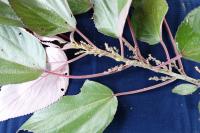
n. tree 6 m tall, dbh 15 cm (collection: Michael J. Balick #4864)
Example: Fiber: Collect the stems of this plant, peel off the outer bark, soak (ret) in seawater for 1 week, then put stone on top of it-the fibers are loosened by the retting, peel them off and hang in the sun to dry and bleach. Weave small baskets, grass skirts and other things from this fiber. When sticks are placed in areas of the sea, shells are attracted to these sticks and people can collect the shells used for adornment--the animals in the shells like to eat the material on the sticks. Dried fruits of this plant are eaten by birds.
bookmarknese uinman
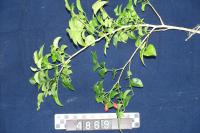
n. tree to 3 m tall, 20 cm dbh (collection: Michael J. Balick #4869)
Example: To treat toothaches, take a handful of leaves, boil them in 1 cup of water, take the warm liquid and leaves and wash or rinse the affected area as needed until pain resolves. The wood is used for carving and is yellowish in color. The stems are used to secure the outrigger to a traditional canoe.
bookmarknipahas
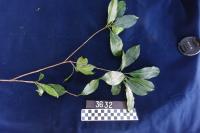
n. tree, 10. 5 m tall (collection: Gregory M. Plunkett #3632)
Example: This plant produces a very strong wood that can be used for an ax or knife handle or a handle for any type of tool. It is a good wood for house posts. It must be dried to use, but it can be dried without the use of fire. Made as with others in ancient days used to make a war club, shape with stone, heat in fire to make it strong.
bookmarknomrop̃om̃
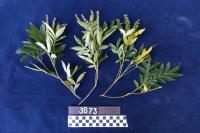
nomropom
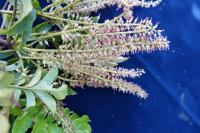
n. shrub to 2 m, flowers white (collection: Michael J. Balick #4874)
Example: This plant is an indicator of rich soil, especially up on the hills from the coast. Therefore, this is where people choose to do their gardens. This specimen is in red soil that is not rich so it does not grow tall, but in the mountains it does grow tall and that is where gardens are planted. Wood from the tree is used for carving.
bookmark